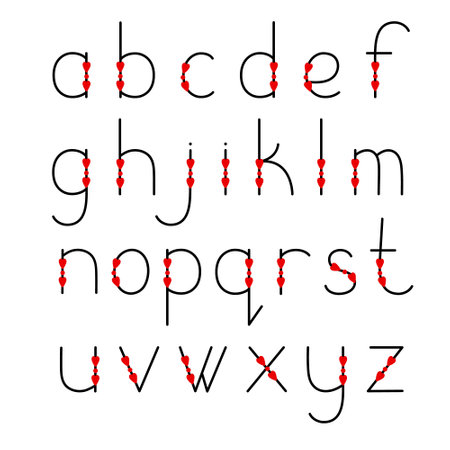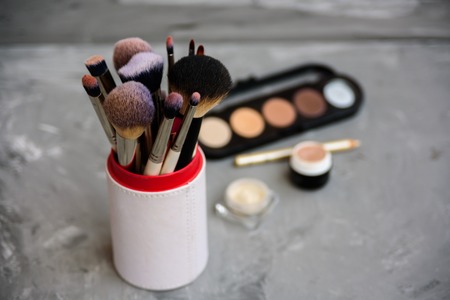Journey into the Aura: Understanding the Invisible
In the heart of British mysticism, the notion of an aura—an invisible energy field said to surround living beings—has long held a place between folklore and spiritual tradition. The ancient Celts spoke of “spirit lights” that danced around people and animals, interpreting these subtle glows as signs from the Otherworld. In rural villages, tales were passed down of healers and wise women who could sense or even see these ethereal colours shimmering just beyond ordinary sight, using their gifts to guide and protect their communities.
Modern interpretations of auras in Britain are deeply rooted in this rich tapestry of myth and legend. Today’s seekers approach the aura as both a symbol and a reality—a bridge connecting personal well-being with the unseen mysteries that linger in old stone circles, misty moors, and churchyard yews. From Victorian-era spiritualists holding séances in candlelit parlours to contemporary practitioners using meditation and intuition, the British perspective frames aura reading as a gentle unfolding: less about spectacle, more about quiet perception and attunement.
To journey into understanding auras is to embrace a uniquely British blend of curiosity and reverence for the unseen. Whether inspired by the legends of fae folk or guided by stories whispered across centuries, learning to see and interpret aura colours invites us to rediscover our own intuitive senses—honouring both ancient wisdom and modern insight as we seek to unveil the invisible world that quietly surrounds us.
2. Warming the Sixth Sense: Grounding and Preparation
Before one can hope to glimpse the subtle hues of an aura, it is essential to gently awaken the sixth sense. This begins not with grand gestures, but with grounding rituals rooted in British tradition and the art of mindfulness. Imagine settling into a sun-dappled corner of your garden, or beside the hearth in a familiar parlour—each setting offers a comforting embrace, anchoring you in the present moment and readying your spirit for intuitive sight.
Let’s explore several practical British rituals and gentle exercises that prepare the mind and body to perceive auras:
Grounding Rituals Inspired by the English Countryside
| Ritual | Description | Setting |
|---|---|---|
| Cuppa & Contemplation | Savour a cup of tea, focusing on its warmth and aroma as you let daily thoughts settle. | Cosy parlour or conservatory |
| Barefoot on Dewy Grass | Stand barefoot on morning grass, feeling earths energy rise through your feet. | English garden or local common |
| Firelight Gazing | Sit by a softly crackling fire, letting your eyes rest and your breath slow with each flicker. | By the hearth or campfire |
Mindfulness Exercises to Attune Inner Sight
- The Stillness Scan: Sit comfortably, close your eyes, and imagine sweeping your awareness from head to toe. With each breath, release tension and welcome calm, visualising peace as a gentle mist surrounding you.
- The Five Senses Reset: Name five things you can see, four you can touch, three you can hear, two you can smell, and one you can taste. This classic mindfulness ritual roots you firmly in the here-and-now—an ideal state for aura perception.
- Bramble Hedge Breathing: Picture yourself beside a wild bramble hedge; inhale deeply through your nose, drawing in earthy scents and exhaling slowly to let worries drift away like autumn leaves.
A Gentle Word Before You Begin
This process is not about striving or straining; rather, it is akin to waiting for dawn’s light to gently reveal colours hidden by night. Trust in these small rituals—the familiar comfort of British settings and mindful presence will pave the way for clearer inner sight as we move towards seeing and interpreting aura colours.

3. How to See Aura Colours: Gentle Techniques for British Eyes
Learning to perceive aura colours is a delicate practice, especially when attuned to the unique rhythms of British life and landscape. Let us guide you through step-by-step methods inspired by local light, weather, and everyday customs—inviting a sense of gentle curiosity and wonder.
Step One: Creating a Calm Space
Begin on a softly rainy afternoon—a familiar British backdrop. Find a quiet room with a view of the gentle drizzle through double-glazed windows, or settle beside a bay window where the natural light filters in softly. Draw the curtains just enough to let in diffused daylight; such lighting is perfect for subtle perceptions.
Step Two: Setting the Intention
As you sit comfortably, perhaps with a cup of tea warming your hands, close your eyes for a moment. Breathe deeply, setting an intention to see beyond the ordinary—to notice the shimmering energy that surrounds all living things. Picture yourself as an observer in your own story, ready for gentle discovery.
Step Three: The Candlelight Technique
If daylight is scarce or evening falls early—as it often does—light a candle and place it near you, preferably on the sill of your bay window. Gaze softly at your hand held against a pale wall or at the silhouette of a loved one. Allow your eyes to relax and blur the outlines. After several moments, you may catch sight of a faint glow or subtle hue tracing their form—the first whisperings of an aura.
Stories from British Beginners
Consider Alice from Devon, who first glimpsed a soft blue haze around her cat as dusk settled outside her cottage. Or Tom in Manchester, who noticed golden flecks around his friend’s head after sharing stories on a rainy Sunday afternoon. These early visions are often fleeting but unmistakable—gentle reminders that every ordinary day holds the potential for extraordinary perception.
Nurturing Your Senses
Embrace patience and trust in your own intuition. Practice during quiet moments—whether in the hush of morning mist, beneath candlelight’s glow, or while watching rain trace patterns down window panes. Each attempt weaves another thread into your tapestry of inner sight.
With these gentle techniques rooted in British light and atmosphere, seeing aura colours becomes not just a skill but a soulful journey—one that unfolds slowly, guided by both curiosity and heart.
4. Interpreting the Hues: British Symbolism and Meanings
Once you begin to perceive the vibrant glow of auras, understanding their significance becomes a journey in itself. In Britain, interpreting aura colours is often enriched by centuries of Celtic tradition and local folklore, lending an extra layer of depth to your intuitive readings. Let’s explore how these hues might be understood through a uniquely British lens, blending ancient wisdom with modern spiritual awareness.
| Aura Colour | Traditional British & Celtic Meaning | Spiritual Interpretation |
|---|---|---|
| Red | Vitality, passion; linked to the fiery heart of Arthurian legends and the energy of the land. | A surge of life force or strong emotions, sometimes signalling deep-rooted ambition or anger. |
| Orange | Creativity and joy; reminiscent of autumnal harvest festivals and communal gatherings. | An open heart, social warmth, and creative drive—signs of someone who thrives in connection. |
| Yellow | Clarity and intellect; echoes the cleverness of foxes in British tales and the optimism of spring daffodils. | Mental alertness, happiness, or a quest for learning—often seen in those who inspire others. |
| Green | Healing and growth; sacred to druids and associated with the lush countryside and renewal. | A healer’s touch or someone in tune with nature—reflecting harmony and gentle compassion. |
| Blue | Calm communication; tied to rivers like the Thames and themes of truth in British ballads. | Sincerity, peacefulness, or strong intuition—often present in listeners and peacemakers. |
| Purple/Violet | Mysticism and wisdom; revered by ancient bards as the colour of visionaries and spiritual leaders. | Spiritual insight or transformative energies—seen in those seeking purpose beyond the material. |
| White/Silver | Purity, protection; white stags are omens in Celtic myth, guiding seekers toward enlightenment. | A rare aura indicating deep connection to spirit realms or angelic guidance on one’s path. |
| Black/Grey | Mystery, transition; not necessarily negative but signalling change or protection from harm. | May indicate unresolved issues or a need for grounding—an invitation to gentle self-reflection. |
Sensitivity and Subtlety: Reading Between the Lines
The British Approach to Aura Interpretation
The British way values understatement and empathy. When interpreting someone’s aura colours, approach with sensitivity—much like reading poetry or appreciating a Turner landscape. Each hue may blend into another, just as moods shift with the weather rolling over Dartmoor. Trust your intuition, yet honour the traditions that shaped these interpretations. Whether you glimpse emerald green reminiscent of Avalon’s mists or indigo echoing twilight over Hadrian’s Wall, allow your readings to be as nuanced as the culture from which they arise. This mindful approach encourages deeper connection, respect, and understanding on your spiritual path.
5. Essential Tools: Trusted British Objects and Aids
In the pursuit of seeing and interpreting aura colours, the right tools can become cherished companions. Across Britain’s green and pleasant land, intuitive souls have long turned to objects steeped in tradition and personal meaning. Selecting your aids is a deeply personal process, guided by both practicality and the subtle whispers of intuition.
Time-Honoured Scrying Mirrors
Scrying mirrors—often fashioned from polished obsidian or simple black glass—have been used for centuries in British folk practice. To begin, choose a mirror that feels comfortable to hold, perhaps one passed down through family or sourced from a local artisan market. Use it in soft candlelight, allowing your gaze to soften as you peer into its depths. The mirror becomes not just a tool but an extension of your own sight, helping you gently perceive the shimmer of aura colours around yourself or others.
Beloved Kept Objects
Sometimes, the most powerful aids are those infused with personal history—a silver locket, an old wooden comb, or a treasured stone found on the moors. These objects carry energy and familiarity; holding them during aura viewing can ground your senses and enhance clarity. Choose something that feels significant to you, something with a story woven into its grain or metal.
Selecting and Using Your Tools on British Soil
As you wander this land, let intuition guide your choices. Visit car boot sales, antique shops, or simply walk along the coastline or through ancient woodlands—let an object find you as much as you find it. When using your chosen aid, ensure it is clean and respectfully kept; perhaps cleanse it under moonlight or with a sprig of rosemary gathered from your garden. Remember, these tools are not magical in themselves—they are bridges between your inner vision and the vibrant energies that dance all around us in fields, villages, and city streets alike.
6. Everyday Encounters: Stories and Practical Tips
Real-life Tales from British Practitioners
Weaving the perception of aura colours into daily life may sound mystical, but for many across Britain, it’s as natural as a stroll through Hyde Park or sharing a cuppa with friends. Take Anna, a Reiki healer from Brighton, who first noticed her ability to see subtle blue shimmers around people while tending her plot at the local allotment. She describes how the gentle presence of nature – dew on marigolds, the hum of bees – amplifies her intuitive senses, making it easier to read energies not just in people, but in plants too.
The City’s Subtle Energies
Meanwhile, Marcus, an intuitive coach based in Manchester, shares that city life offers its own opportunities for aura observation. In the midst of Piccadilly’s bustle, he recommends pausing at a café window and letting your gaze soften over passing commuters. “You might spot a flash of vibrant red around someone striding with confidence, or a misty grey trailing behind someone weighed down by worries,” Marcus notes. His tip: trust your initial impressions—intuition often speaks before logic intervenes.
Seaside Insights: The Coastal Connection
For Isla, who lives along the rugged Cornish coast, the interplay between sea mists and shifting skies helps her tune into auric hues. She suggests grounding yourself barefoot on sand or pebbles while focusing gently on those nearby. “The wind clears my head; then I sense soft yellows or greens dancing around children playing by the shore,” she recalls. This connection between place and perception is echoed by many who find their gifts heightened amid Britain’s diverse landscapes.
Practical Tips for Daily Aura Practice
- Start Small: Begin by observing houseplants or pets at home—their energies are often easier to perceive than humans’.
- Create Rituals: Set aside a moment each day—perhaps whilst waiting for your tea to brew—to softly gaze at your hands against a pale background and notice any tinges of light or colour.
- Journal Your Impressions: Whether you’re on the Tube or sat on a windswept bench in Whitby, jot down any colours or feelings that arise when you focus on others’ energy fields.
- Trust Your Intuition: If you sense a particular shade or feeling around someone, honour that experience without judgement—over time, patterns may emerge that deepen your understanding.
Ultimately, seeing and interpreting aura colours is less about grand rituals and more about weaving quiet moments of awareness into your everyday rhythm—be it under rain-soaked clouds or city lights. As British practitioners remind us: attuning to subtle energies is a practice best nurtured with patience, curiosity, and a good dash of local spirit.


